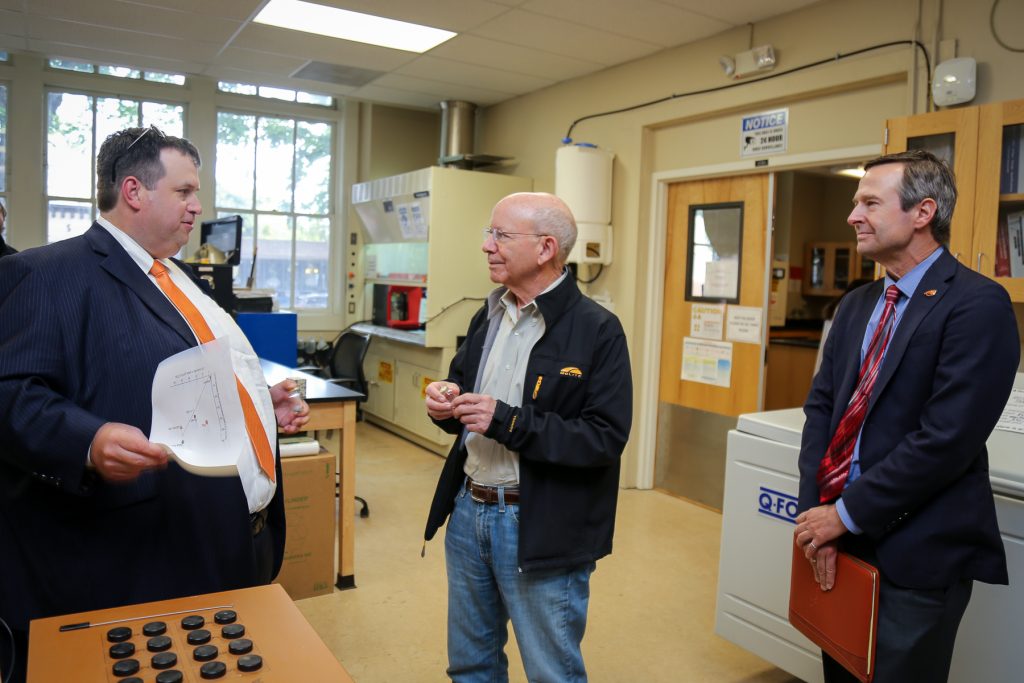In June, U.S. Rep. Peter DeFazio visited Oregon State to learn about recent advances in improving the health of transportation infrastructure, reducing carbon emissions, and enhancing traffic safety.
Jason Weiss, school head and the Miles Lowell and Margaret Watt Edwards Distinguished Chair in Engineering and Burkan Isgor, professor of infrastructure materials and the John and Jean Loosley Faculty Fellow, presented a portfolio of projects aimed at reducing carbon emissions in the built infrastructure. This includes work with Solidia, a startup company that has developed a cement that captures carbon from the atmosphere during a process of carbonation curing instead of the traditional hydration curing.
Additionally, Oregon State received $1.3 million in funding from the Department of Energy’s Advanced Research Projects Agency-Energy to develop computational tools to evaluate the feasibility of using industrial byproduct materials to make low-energy cements.
During his visit, DeFazio said he learned a lot from the presentations and a tour of the Driving and Bicycling Simulator Laboratory, and that Oregon State researchers could be resources to him as chair of the House Transportation and Infrastructure Committee.


